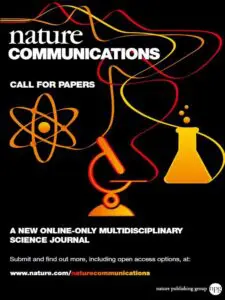
“Organoids,” three-dimensional cell cultures that mimic critical features of normal human organs, are a novel tool to study fundamental steps in the development of cancers. The authors of this paper, a team from Utrecht, The Netherlands, wanted to understand how specific genetic alterations contribute to the transformation of normal liver cells into fibrolamellar carcinoma (FLC). For this purpose, they used gene editing technology to add mutations that have been found in classic FLC or a set of related “FLC-like” liver tumors into to normal human liver organoids.
A main goal was to determine the impact of the signature genetic change found in 99% of FLC cases, namely, the deletion (loss of DNA) that fuses two genes on human chromosome 19 to create an oncogene (cancer-causing gene) designated DNAJB1-PRKACAfus. Studies over nearly a decade since discovery of this fusion gene in human FLC have indicated that it suffices to drive liver tumor formation in mice, albeit slowly. Furthermore, its activity is essential for the continued growth and survival of human FLC cancer cells. The protein produced by the fusion gene is a modified version of protein kinase A (PKA), an enzyme that plays a key role in signaling systems that control cellular growth and metabolism. In the FLC fusion protein a segment of a heat shock protein-40 (HSP40, aka DNAJB1) replaces a small segment at one end of PKA.
The team also tested the impact of genetic changes that are found in many of the “FLC-like” human liver tumors. These are knockouts (KO, implying complete loss of expression) of both copies of genes named BAP1 and PRKAR2A. BAP1 is a so-called “tumor suppressor” gene that inhibits the transformation of some normal cells into malignant ones. BAP1KO mutations have been found in a variety of cancers. PRKAR2A codes for a protein that regulates PKA, so that enzyme activity depends on the presence of a metabolite called cyclic-AMP (cAMP). By contrast, in PRKAR2AKO mutant cells, PKA activity is elevated even in the absence of cAMP. Thus, a crucial common feature of FLC and FLC-like liver cancers is that each is driven by a genetic change that deregulates PKA.
As would be anticipated, normal liver organoids genetically engineered to introduce DNAJB1-PRKACAfus acquired features resembling FLC, such as changes in 3-D organization, a transition from mature hepatocytes (liver cells) to a less differentiated state, and a shift in the global pattern of gene expression to resemble that of the cancer cells. However, DNAJB1-PRKACAfus alone did not appear to generate fully transformed FLC cancer cells.
The knockout of the tumor suppressor (BAP1KO) combined with deregulation of PKA by knockout of its regulator (PKAR2AKO) also led to de-differentiation of hepatocytes (mature liver cells) and changes in the gene expression profile to resemble that of FLC. However, compared to DNAJB1-PRKACAfus organoids, the combination BAP1KO PKAR2AKO organoids displayed a more definitive transformation to a cancer-like state. Key distinguishing features included:
- a less organized, more tumor-like 3D structure;
- more complete escape from checkpoints controlling cell proliferation; and
- the ability to proliferate under certain organoid culture conditions (a “ductal cell environment”) in which normal liver stem and progenitor cells, as well as full-fledged cancer cells, can grow, but normal hepatocytes cannot.
An important next step that can be pursued systematically in the organoid system will be to determine whether additional factor(s) can push DNAJB1-PRKACAfus organoids to acquire a more complete set of the hallmarks of FLC cancer cells. An important possibility is that additional mutations and/or changes in the control of gene expression may be needed, on top of fusion gene, to drive a full transformation.
The authors also suggest that changes in the cellular makeup of the organoid cultures might create an environment in which DNAJB1-PRKACAfus would be more potent. “Stromal” cells, which are responsible for the characteristic connective tissue layers recognized in the name fibrolamellar, might provide a missing element for full transformation to FLC. Similarly, it is conceivable that hepatocytes are not the optimal cell type for this transformation, and that in organoids of a different lineage (e.g., ductal cells) the fusion gene would give drive more complete cancerous transformation.
The full text of the article can be read here.
Notes: The study underlying this publication was funded by a FCF grant to Benedetta Arteggiani and Delilah Hendriks of the Princess Maxima Center for Pediatric Oncology and the Hubrecht Institute, respectively. Professor Hans Clevers, an acknowledged world leader in studies of normal and cancer stem cells and the development of organoid models, and a mentor of the lead investigators, is a co-author.
The identification of a distinct class FLC-like liver cancers with the BAP1KOPKAR2AKO genetic constitution was first reported by the laboratory of Prof. Jessica Zucman-Rossi, INSERM, in Paris France. Prof. Zucman-Rossi is a member of the FCF’s Medical and Scientific Advisory Board.
